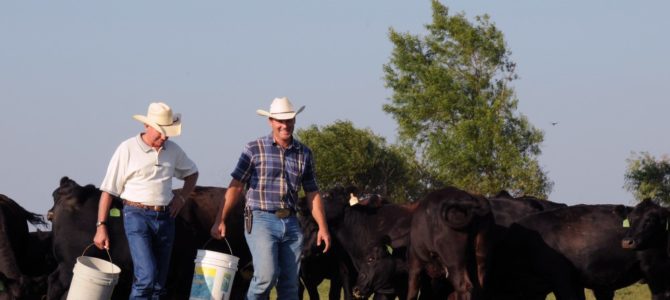In negotiating a new farm bill, the House and Senate have decided the best approach to work out their differences is by selecting the worst options from each of their bills and add them together into one terrible bill.
Every five years Congress has the opportunity to reform farm policy and food stamps. When the discussions began this time around, minor reforms appeared attainable. After about two years of struggling to get a new farm bill, and some legislators properly challenging the status quo, Congress is about to pass another trillion dollar disaster.
They could have saved themselves some time two years ago by just introducing a typically bad farm bill with special interest handouts and no reforms. Instead though, there was a real farm bill fight, which is why the Conference’s newly released farm bill is even more puzzling. Once more it looks like Congress caved to special interests while ignoring the American public.
The name “farm” bill is itself a misnomer. It’s really a “food stamp” bill since about 80 percent of its spending is dedicated to the food stamp program. Politicians are forthright about why these unrelated programs are packaged together: politics. Ranking member of the Senate Agriculture Committee Thad Cochran (R–MS) explained farm bill politics well when he argued that the farm bill includes food stamps “purely from a political perspective” since “it helps get the farm bill passed.” Food stamps and farm programs are combined together so that the farm bill gets the support of the two distinct constituencies. Urban members who support food stamps vote for the farm bill to protect their interests, and the rural members vote for their agriculture programs.
If there is to be real reform, these programs need to be separated and considered on their own merits in different bills. The House took an important step in that direction by reauthorizing food stamps for three years and farm programs for five years. However, the conference report’s new farm bill drops this critical change, despite the fact the idea has wide public support.
The House also caved on the debate over cuts to food stamps. Its willingness to give in to the Senate isn’t merely about the amount of cuts; it’s also about policy. On the numbers side, the House bill would have reduced food stamp spending by $39 billion over 10 years. The Senate bill would have reduced spending by $4 billion. The “compromise” is $8 billion, just a “mere” $31 billion less than what the House sought.
The policies are the cause of most concern. One loophole, known as broad-based categorical eligibility, allows people to receive food stamps even if they have a million dollars in the bank. There’s no asset test, so in theory, an individual could have unlimited assets and still receive food stamps. This absurd loophole should be closed. To its credit, the House did close the loophole in its bill. Then, the House negotiators folded when it came to the conference bill. If this loophole were closed, taxpayers would have saved about $12 billion.
The agriculture side of the bill is just as bad. If this new bill passes, Congress would take government handouts to farmers to a whole new level. Two new programs are less concerned with providing a safety net and more about attempting to eliminate virtually all risk to farmers. The shallow-loss program insulates farmers from even minor losses.
The big problem with these two new programs is their cost is contingent on commodity prices. If prices don’t stay at or near record highs, taxpayers could have almost unlimited liability. There’s excessive protection for farmers, but there’s no cap or price ceiling to protect taxpayers. The House bill though would have provided a cap for the costs of these two new and unknown programs, but that too was removed in conference.
It gets worse. The most expensive farm program, crop insurance, wasn’t reformed at all. While even President Obama would have cut about $12 billion from this costly program in his budget, the new bill actually increases costs by about $6 billion. Yet, programs that restrict supply and drive up food prices, such as the sugar program, were left untouched.
The special handouts to wealthy agribusinesses were left unscathed as well. Taxpayers pay about 62 percent of the premiums for farmers who purchase crop insurance. A minor reform in the Senate bill could have slightly lowered the subsidy for farmers with adjusted gross income of $750,000 or more. Even this one little effort to provide some sensible policy to help taxpayers was excluded from the farm bill. The sucking sound you hear is the money coming out of your pocket and being handed over to special interests.
Even holidays aren’t immune from the new bill. It includes a provision from the House bill that requires the Department of Agriculture to allow a “mandatory assessment” (i.e. tax) on Christmas trees.
The process of how this final bill was developed is just as bad as its substance. The text of the bill wasn’t made available until Monday night.*
The Congressional Budget Office score wasn’t made available until Tuesday night. Reports consistently said that the proposed savings would be $23 billion over 10 years; the latest CBO score drops the number to $16.5 billion. This isn’t to say that $23 billion is big savings, but now that tiny number has been made even smaller.
This bill looks pretty bad now, and it looks like we really won’t know all the bad things in it until after Congress passes it. The problem is the American public will be the ones hurt by the substance and the process of this nearly trillion dollar bill.
Daren Bakst is a Research Fellow in Agricultural Policy at The Heritage Foundation.
*Originally, this piece stated that the House was breaking its own rules by having less than 48 hours to review the text before its vote. But that rule doesn’t apply in this case since it is a conference bill.









